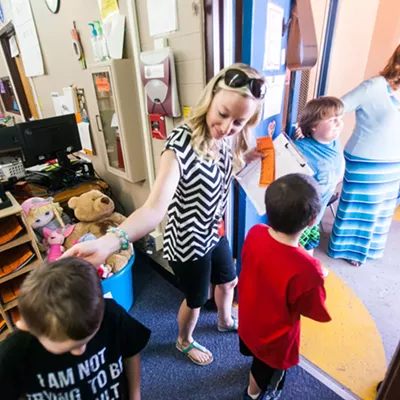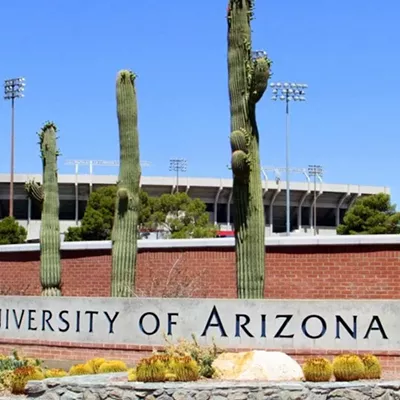Some tote fake documents; others stay with relatives on the American side. All of them pose as full-time United States residents. In the process, they must dodge school district monitors stationed at the port, part of an increasingly aggressive efforts to root them out.
On any given day in border towns such as Nogales, several hundred children can be involved in this daily game of cat-and-mouse. Some are mere tots, gripping their mother's hands. Others are older. And each denies crossing into Arizona to attend class.
"The kids I know from school, they all live on the Arizona side," says one boy, a seventh grader, as his mother scans colorful windbreakers in a store window. Another boy, a gregarious and slightly chubby 11-year-old, says he goes back and forth every day "just to visit my abuela (grandmother) who lives in Mexico. My best friend goes with me, because his grandmother lives there, too."
They might be telling the truth. But proving so can create big headaches for fiscally strapped schools, says Nogales Unified School District Superintendent Kelt Cooper. Recent crackdowns here found almost 200 children attending Nogales schools under false pretenses, but Cooper estimates that up to 10 percent of his district's approximately 6,000 students may still live in Mexico. Each costs the district about $5,000 per year to educate, in what Cooper calls "a fraud on the government and the taxpayers."
The Nogales school district continues spending up to $125,000 annually to stop the practice. Administrators constantly scan their databases for suspect student addresses--such as one home that was listed by 30 students--and Cooper regularly sends monitors to the ports of entry to check on students coming across.
"They're easy to spot," he says. "They're usually wearing uniforms--red shirts and khaki pants. I don't intend to be the (U.S. Immigration and Naturalization Service), but I don't think it's our moral obligation to educate students who don't live in my district."
This decades-old deception plagues border states from Texas to California, but judging the extent of the problem is difficult. Take the situation in Laredo, Texas: As in the Nogales ports, agents with the U.S. Customs and Border Protection agency are required only to check that children have the proper documents to cross the border, but aren't required to track Mexican children who may be attending Texas schools.
"We take a close look during the morning rush hour," says agency spokesman Rick Pauza. "But our responsibility is only to determine a person's admissibility."
At a national level, the U.S. Department of Education doesn't have stats on the number of students crossing the border to attend U.S. schools under false pretenses, says spokesman Jim Bradshaw. Instead, he calls it "a state and local issue."
The numbers of border-crossing students isn't much clearer at a state level, says Tom Horne, Arizona superintendent of public instruction. To get a clearer picture, Horne has asked the state attorney general to investigate the scope of the problem. He says taxpayers deserve nothing less, especially since "state budgets are tight all over right now. People naturally feel uneasy if they feel their government is tolerating a scam without looking behind the surface."
While the dilemma looms large in Nogales, it's even worse in quickly growing towns like Chula Vista, south of San Diego, where parents complain that children from Tijuana add to already crowded classrooms. In response, Chula Vista officials have adopted a get-tough approach, annually requiring parents to provide proof of residency.
While anger simmers, however, many Chula Vista residents are afraid to speak out, fearing they'll be labeled racists. But when the San Diego Union Tribune highlighted the district in a recent story, the newspaper received a flood of resentful e-mail supporting the crackdown.
Others advise caution on the complex issue.
"It's one of those situations where legal questions become moral questions," says Gabriela Lemus, policy director for the League of United Latin American Citizens in Washington, D.C. "My sympathy is always with educating all children. But we also need to find an open way to deal with it, because there is a cost to both taxpayers and communities."
At the same time, "this demonstrates the solidity we have in border communities," says Lemus. It's up to each community to crack down or come up with some private-public financial partnership to educate children from Mexican border towns, "because clearly there's a demand. Otherwise, these kids' parents wouldn't even consider sending them over here."
Mercy asks that her last name not be used; this issue can get nasty in Nogales. Every day, the mother of two grown children stands behind the counter at Andres Tienda, a general store one block north of the DeConcini Port. And every day, she sees kids passing by on their way to Arizona schools.
"I think that all children should have the right to a good education, no matter where they live," Mercy says. "These kids are our future, on both sides of the border."










